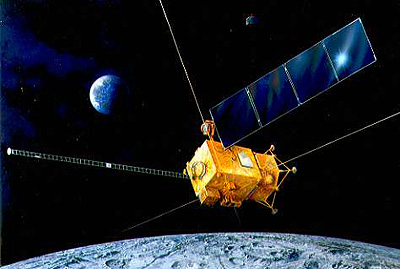A news that today in retrospect is clear that she was too optimistic, regarding the Japanese full of failures - Japanese spaceships to the moon

The moon was left to its own devices for over twenty years. In 1994, the Clementine spaceship that circled him returned to him again. If the scientists thought that the moon was not hiding its secrets, they were in for a surprise, the spacecraft photographed the surface from a low altitude in the infrared range and discovered signs of solid water deposits - or as they are popularly called ice in craters hidden near the poles.
Four years later, in 1998, the Lunar Prospector spacecraft reached the nearest neighbor again and precisely measured the amount of ice. The Lunar Prospector's initial mission was to study the moon's gravity, and according to them the moon has a small core. This confirms the theory that the moon was formed from hot fragments of the earth's crust that were blown into space in its very early period due to a collision with a very large object.
Later in 1999, Japan will launch the LUNAR-A spacecraft to the moon defined as a mission to orbit and penetrate the lunar surface. The scientific goal of LUNAR-A is to photograph the surface of the moon, and monitor the moon's vibrations, measure the temperature properties in the area below the surface of the moon and the heat currents there, as well as study the internal structure of the moon's core.
For this purpose, the spacecraft will carry a mapping camera and two landers that will contain instruments for digging in the lunar soil. These devices are seismometers and devices for measuring heat currents. In addition, the Japanese are planning a follow-up project for 2003, named SELENE.
